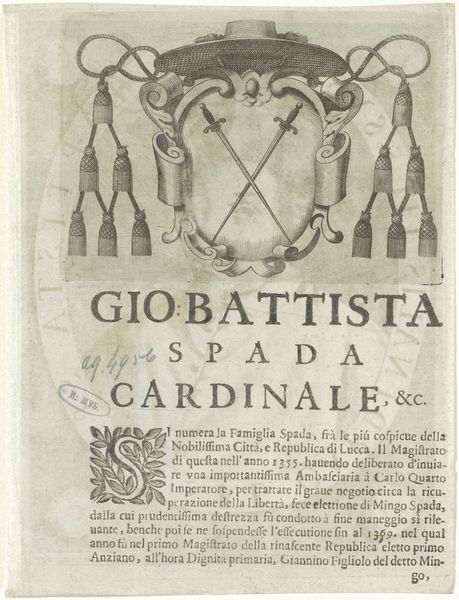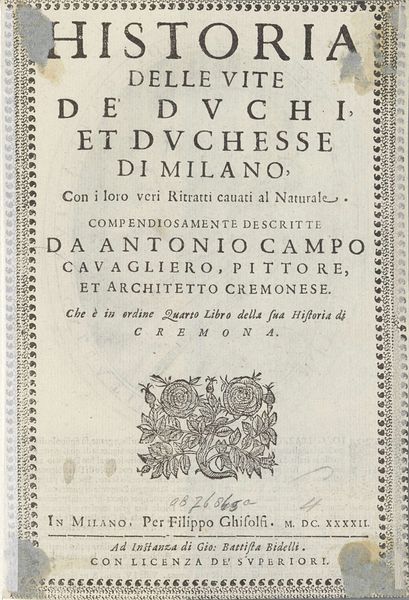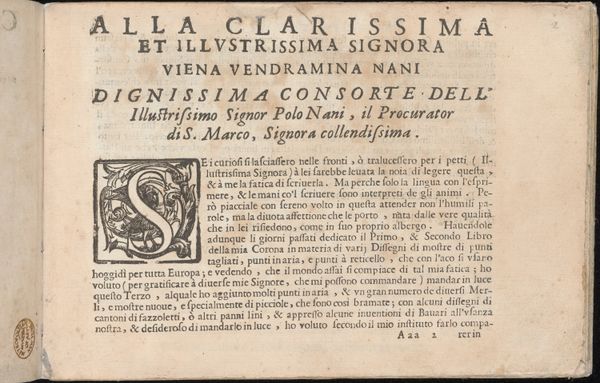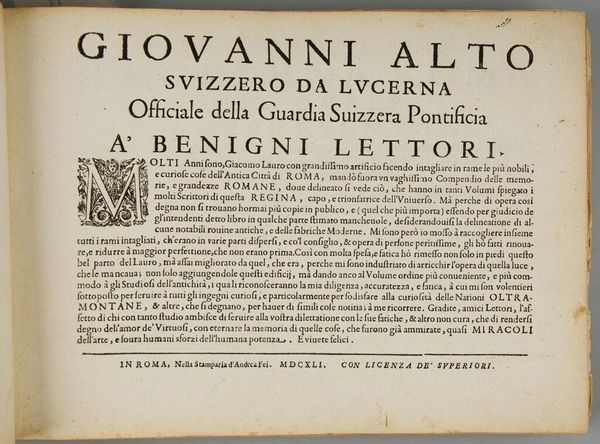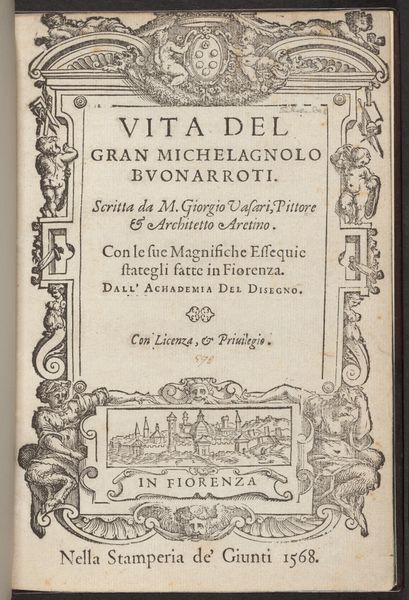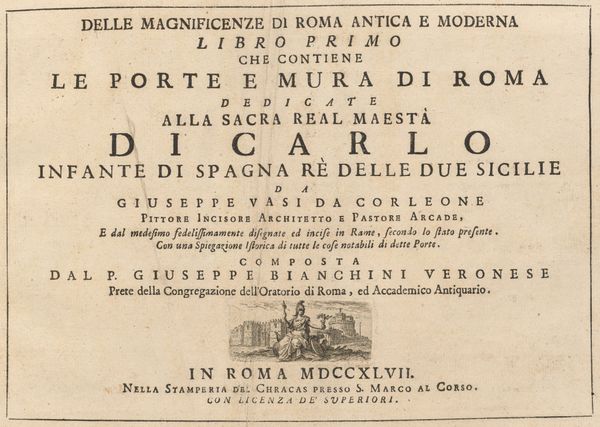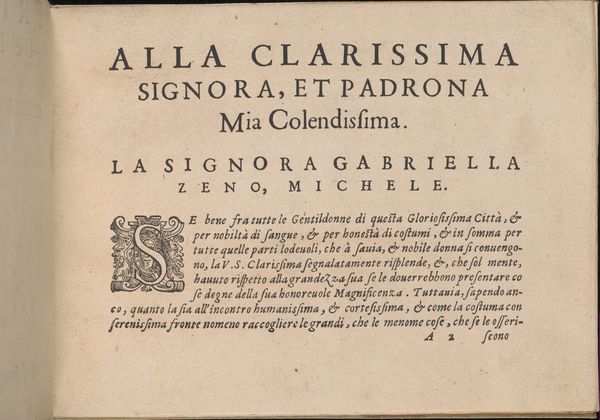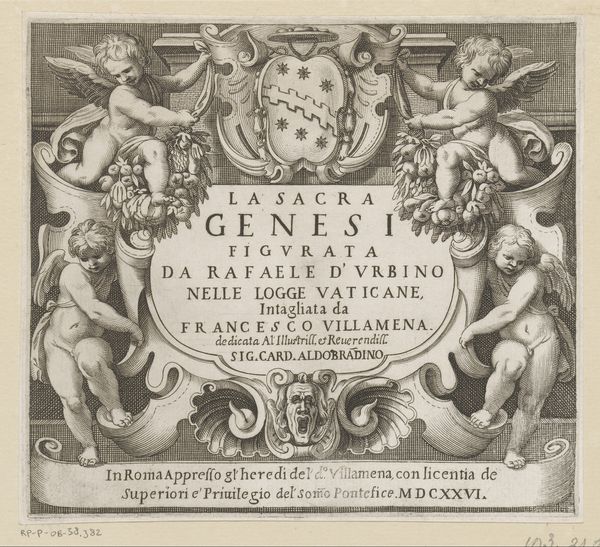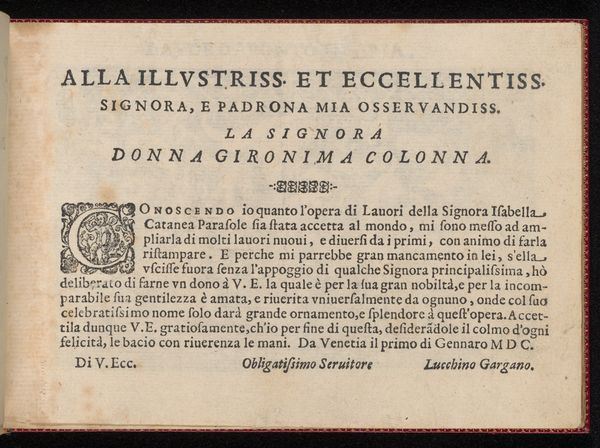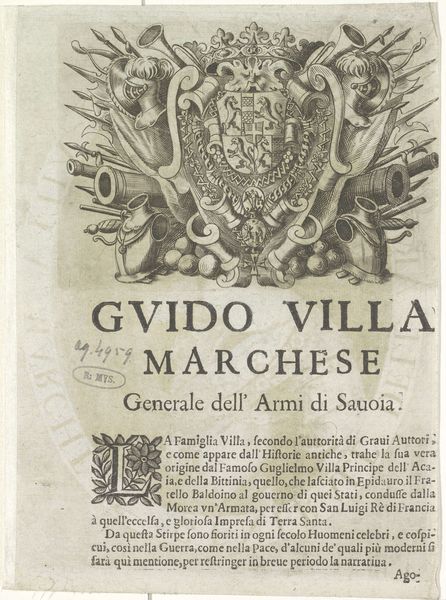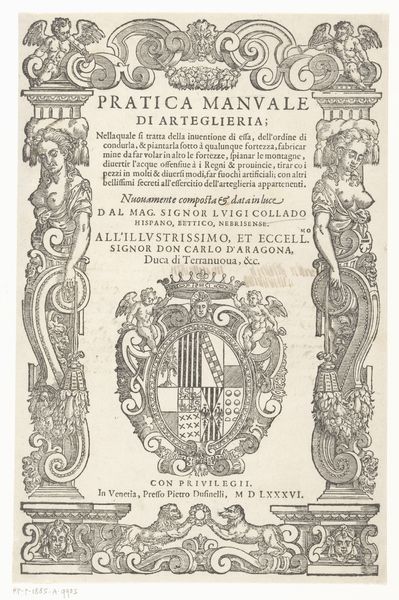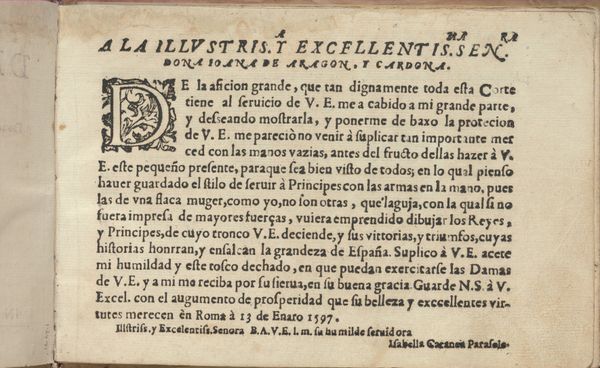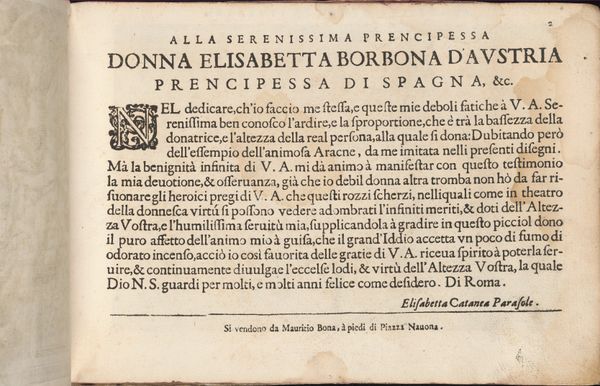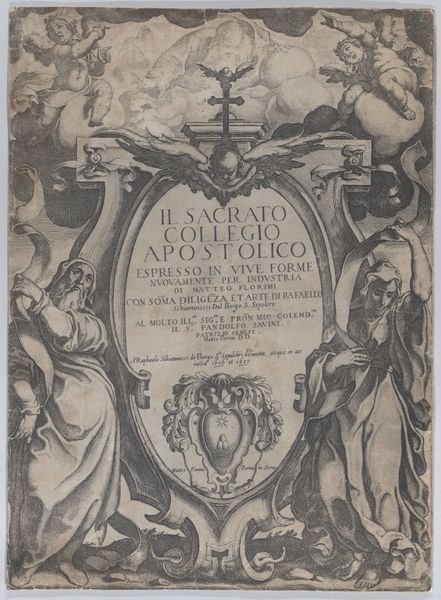
graphic-art, print, engraving
#
graphic-art
# print
#
11_renaissance
#
history-painting
#
engraving
Dimensions: height 180 mm, width 134 mm
Copyright: Rijks Museum: Open Domain
Jacopo Cotta made this Coat of Arms, or "Wapenschild" as it's known, likely in the late 17th century, using engraving. This is a printmaking process where lines are incised into a metal plate, which then holds ink and transfers the design to paper. The material qualities of the copper plate – its hardness and capacity to hold fine lines – directly influence the crisp, precise details we see here. The process demands meticulous skill and time. Each line is a deliberate act, reflecting not only Cotta’s technical expertise, but also the cultural significance attached to heraldry at the time. Engravings like these were often commissioned by wealthy families as symbols of power and lineage. The amount of work involved in producing such a detailed image underscores the prestige associated with the coat of arms itself. Considering the Wapenschild's materials and making helps us understand its social role and challenges traditional distinctions between the fine and decorative arts.
Comments
No comments
Be the first to comment and join the conversation on the ultimate creative platform.
